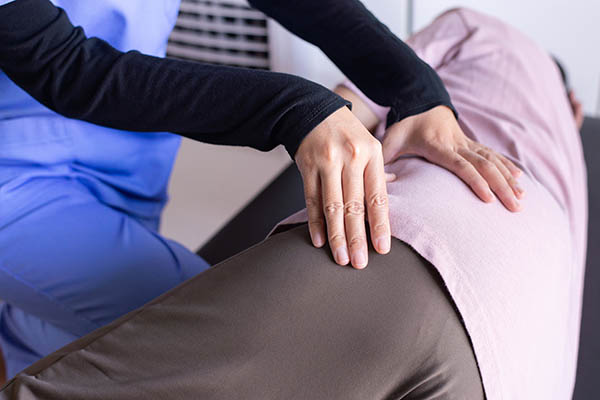Regaining Movement After a Hip Replacement

Total hip replacement surgery can help restore mobility and reduce pain in a diseased or otherwise damaged hip. Whether the issue was osteoarthritis or something else, it is expected for patients to feel excited about having a more active lifestyle. Fortunately, a physical therapist can help get you moving again. In this blog, we will cover what to expect from physical therapy after getting a new hip.
Regain mobility after total hip replacement surgery
Physical therapy is the key to unlocking the full potential of one’s new hip joint. A patient can speed up the healing process with regular exercise and stretching, allowing the new joint to become strong, mobile, and flexible.
Exercises immediately after surgery
Physical therapy will begin as soon after total hip replacement surgery as possible. Typically, this means it is possible to complete postoperative exercises in the recovery room. At this point, the exercises will be light, focusing on getting the blood flowing and the muscles and joints moving. This is crucial in preventing blood clots and rebuilding strength in the muscles used when the hip is engaged.
Ankle pumps and rotations, knee bends, and leg raises are common in the early days of physical therapy since patients can complete them while lying in bed. The physical therapist will likely recommend light exercises that target the buttocks and thigh muscles (quadriceps). Once the patient is able, they will need to complete standing exercises. Walking short distances will also be crucial in their recovery; walking exercises will first be done with crutches or a walker. Remember to take it slow.
Skills that need to be relearned
Most people do not think about how often they use their hips until they are not working as usual. After hip replacement surgery, patients will need to retrain themselves on how to complete everyday activities with their new hip. These activities include:
- Sitting
- Showering
- Getting dressed
- Getting up out of a chair
- Getting out of the car
The patient’s physical therapy plan of care (also called a “PT plan of care) will help make relearning these daily skills easier by rebuilding muscle strength and joint mobility. Let the physical therapist know if a particular skill is giving one trouble so they can make adjustments.
How physical therapy evolves
In addition to adjustments here and there immediately after surgery, a patient’s PT plan of care will evolve as their hip heals. Over the next few months, the physical therapist will likely have the patient complete more advanced exercises, such as resistive hip extensions and riding an exercise bike. The patient will also need to walk more often. The goal is to recondition the muscles and help the hip move without any issues or pain.
Speak to a physical therapist
If you are considering total hip replacement surgery, have a physical therapist lined up to help guide you throughout the recovery process. This can help ensure better healing and mobility. To learn more, call our office today and ask about our services.
Request an appointment here: https://ocptclinic.com or call Orange County Physical Therapy OCPT at (949) 299-0297 for an appointment in our Newport Beach office.
Check out what others are saying about our services on Yelp: Hip Replacement in Newport Beach, CA.
Related Posts
Massage therapy is widely known for its therapeutic benefits, particularly when administered by an experienced physical therapist. Physical therapists have a unique understanding of musculoskeletal anatomy and movement and can utilize massage therapy to help patients recover. This approach, also known as physical therapy massage, reduces pain and improves overall physical health.According to the National…
Cycling performance therapy can be an important resource for athletes seeking to improve efficiency, prevent injuries, and recover from physical strain. This specialized approach, provided by a physical therapist, addresses the unique biomechanical demands of cycling while promoting long-term musculoskeletal health. Cycling performance therapy is a targeted program designed to improve a cyclist's endurance, strength, and…
Physiotherapy is a medical term that refers to physical therapy. Many individuals are familiar with physical therapy due to the common need for it among sports players and individuals who may have gotten injured or experienced a chronic illness.There is also a common misconception that physiotherapy is only needed when it comes to rehabilitating a…
Hip pain can be a debilitating condition that affects your daily activities and overall quality of life. Seeking hip pain treatment from a physical therapist when it first appears can prevent further complications and improve your health and well-being. Here are four main benefits of early hip pain treatment.Early hip pain treatment can prevent further…
